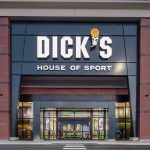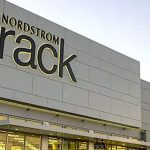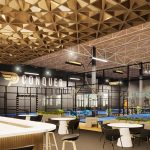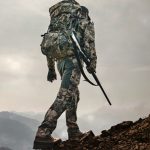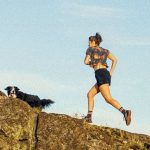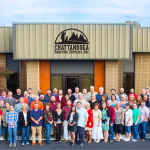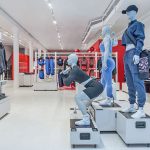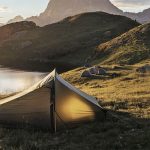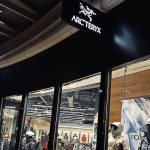This year could easily be looked at as four quarters of integration. The massive, blockbuster acquisitions of 2004 and 2005 forced many of the serial consolidators to take a step back and start to put the pieces of their new puzzle together in the most efficient manner. Because of this, there were really no big strategic deals during 2006, although several private equity firms still remained active in the Bicycle, Outdoor, and SnowSports market. The industry also made significant headway in its government relations efforts, with some major victories in resource preservation and trade issues for OIA, SIA, and Bikes Belong.
Out of all the players in the consolidation of the hardgoods industry, most would agree that K2, Inc. started this most recent wave of blockbuster deals with the Volkl, Marker, and Marmot triple play in 2004. This deal was integrated over the course of 2005, and now it appears KTO has a bit of a head start on its competitors. In fact, the company may have already sent a signal that it is ready to begin expansion again with the acquisitions of Line, Karhu, and Sevylor this year.
The biggest deal of the year happened when Easton Sports was acquired by Riddell-Bell Sports for roughly $300 million to form Easton Bell Sports, a half-billion dollar holding company that is active in the bicycle, ski, snowboard, outdoor, and team sports markets.
Quiksilver has finally pulled Rossignol into its corporate culture and posted some strong results in Q3, but has yet to send out any indication that it is ready for another big deal. The company still has a ways to go with the integration and expense cutting process, but it is pulling things together ahead of schedule.
Amer Sports continues to struggle with the Salomon integration, with late deliveries hurting third quarter results, but Roger Talermo and his team were able to methodically cut the inefficiencies out of the supply chain and make some major strides towards profitability during the year. The company achieved its goal of becoming the largest sporting goods equipment company in the world, but still has a long road ahead before it becomes as efficient as it needs to be.
So 2007 should be a major turning point for the company as Salomon is completely folded in and it may be able to start looking for new brands. Consolidating all Winter Sports brands under one chief based in Utah will surely help pull the project together.
Rottefella also acquired a majority stake in NAXO this year, signaling the possible beginning of a consolidation cycle in telemark and AT. As Black Diamond keeps growing and adding to its R&D department, some of the smaller players in the market will have no choice but to acquire or be acquired.
Burton expanded its hardgoods offering and balanced its seasonality by acquiring Channel Islands Surfboards. Burton will also ship its first collection of action sports lifestyle apparel this year to be able to speak to its youth market year-round.
In the paddlesports market, a few more deals went down, but none were of the significance of the Watermark Confluence deal last year. Confluence is still working on integration and getting its manufacturing and warehousing systems up to speed, but should see some up-side this spring. One deal that many retailers are keeping a close eye on is Johnson Outdoors acquisition of Lendal paddles.
Also, Legacy Paddlesports and LiquidLogic joined forces in a merger of equals. While the two brands are relatively small, and Legacy is still technically a start-up, the merger should be beneficial for both.
Thule was clearly the most active consolidator on the hardgoods side this year, with acquisition agreements with anhaenger-center.com, a german trailer rental company; Pewag Schneeketten Group, an Austrian Snow Chain company; Star Industrier, a Swedish trailer manufacturer; Brink International BV; Valley Industries; and SportRack Accessories. However, the company ran into some road blocks at the end of the year as the talks with the European commission caused Thule to withdraw its agreement with the Pewag Schneeketten Group, due to anti-trust concerns.
Other deals in the hardgoods sector included Tecnica acquiring Blizzard and moving the brand under the Nordica business; Dalbello and Elan forming a joint venture in the U.S. market; Chisco and Chums merging into a single company; Deuter being sold to Schwanhäußer, a German pen and cosmetics manufacturer for somewhere in the neighborhood of $35 million; Cascade Designs selling its SealLine SmartTrack rudder system to Smart Track LLC; Fiskars, the parent company of Gerber Legendary Blades, acquiring the Silva Group and its U.S. subsidiary, The Brunton Company; Mammut acquiring Lucido; and Implus acquiring Yak-Trax.
The hardgoods sector saw a new player enter the game this year with ORC Industries acquiring Redfeather Snowshoes and Bell Canoe Works. Company CEO Todd Bahnub is working towards building a stable of brands that compliment the companys existing U.S.-based manufacturing facilities that employ disabled workers.
Finally, to finish out the year, VF Corporation acquired Eagle Creek in a deal valued at roughly $32-$36 million. The synergies are apparent with bag and luggage sourcing already in-place at VF through their JanSport and Eastpak brands. In addition, VF seems to have brands that do business in categories all around Eagle Creek, but none that are in direct competition.
On the softgoods side, perhaps the most significant consolidation of the year was Columbia, acquiring their long-time competitor, Pacific Trail in a bankruptcy auction. The deal opened up the mass market for Columbia, but it also caused Moonstone to fade out of existence. The deal has yet to bear any real fruit for COLM, but should start to in 2007. Columbia also expanded it footwear portfolio with the acquisition of Montrail.
The largest deal of the year in the outdoor softgoods sector was put together by Silversteep Partners, an outdoor and active lifestyle-specific investment advisory firm. The company pulled Helly Hansen and Altor, a Norwegian private equity firm, together in a deal valued at an estimated $185 million to $200 million.
Timberland became a more active player in the acquisition game, while its core urban yellow boot business continues to struggle. The company is still doing an excellent job of transforming itself into an eco-conscious holding company. Deals for Timberland this year included acquiring the GoLite trademarks as well as Howies, a Welsh outdoor/action sports lifestyle brand that was built on environmentally friendly practices. There were reportedly several other investors looking at acquiring Howies and bringing the brand to the U.S.
La Sportiva N.A. saw a bit of action at the beginning of the year, when it merged with LaSportiva SPA, which is now its Italian parent.
Another deal that was significant for the market was prAna being acquired by Liz Claiborne. While this deal had no significant consequences for prAnas business – in fact there are more up-sides than not – it did show that major non-outdoor apparel corporations, other than VF, can pull off an acquisition in the outdoor industry without losing the core audience.
Other softgoods deals included Vaude acquiring Edelrid; CamelBak Products acquiring Southwest Motorsports Enterprises; Crocs entering into agreements to acquire Jibbitz, LLC for $10 million in cash and Exo Italia; and Oakley inking a deal to acquire Eye Safety Systems.
Aside from the deal flow environment for the year, the biggest trend in the softgoods sector has been towards owned-retail. With The North Face, Columbia, Quiksilver, Cloudveil, ArcTeryx, and several other major brands establishing a presence or considering a presence in owned-retail, it is becoming a widespread trend in the industry. These vendors insist that their retail stores are designed to boost their dealers sales and not to cannibalize their business.
At the same time, the outdoor industry is about to see its first completely vertically integrated company, taking products from design, to manufacturing, to retail in one business plan. NAU, which was originally formed as “under the wire” by several Nike and Patagonia vets last year, should be launching its first store sometime in 2007.
Finally, The SportsOneSource Group, which publishes The B.O.S.S. Report, made some news of its own this year with the acquisition of SportScanINFO at the beginning of the year and the acquisition of the VNU Sports Business Media family of magazines and events, including Sporting Goods Business, Outdoor Business, Hunting Business, Sporting Goods Dealer, and several other events such as THE ELITE Running Specialty Conference, OB Outlook, and the SGB Forum. The deal accelerated SportsOneSources entry into the world of print publishing and created several synergies between research, online newsletters, and traditional print media.

